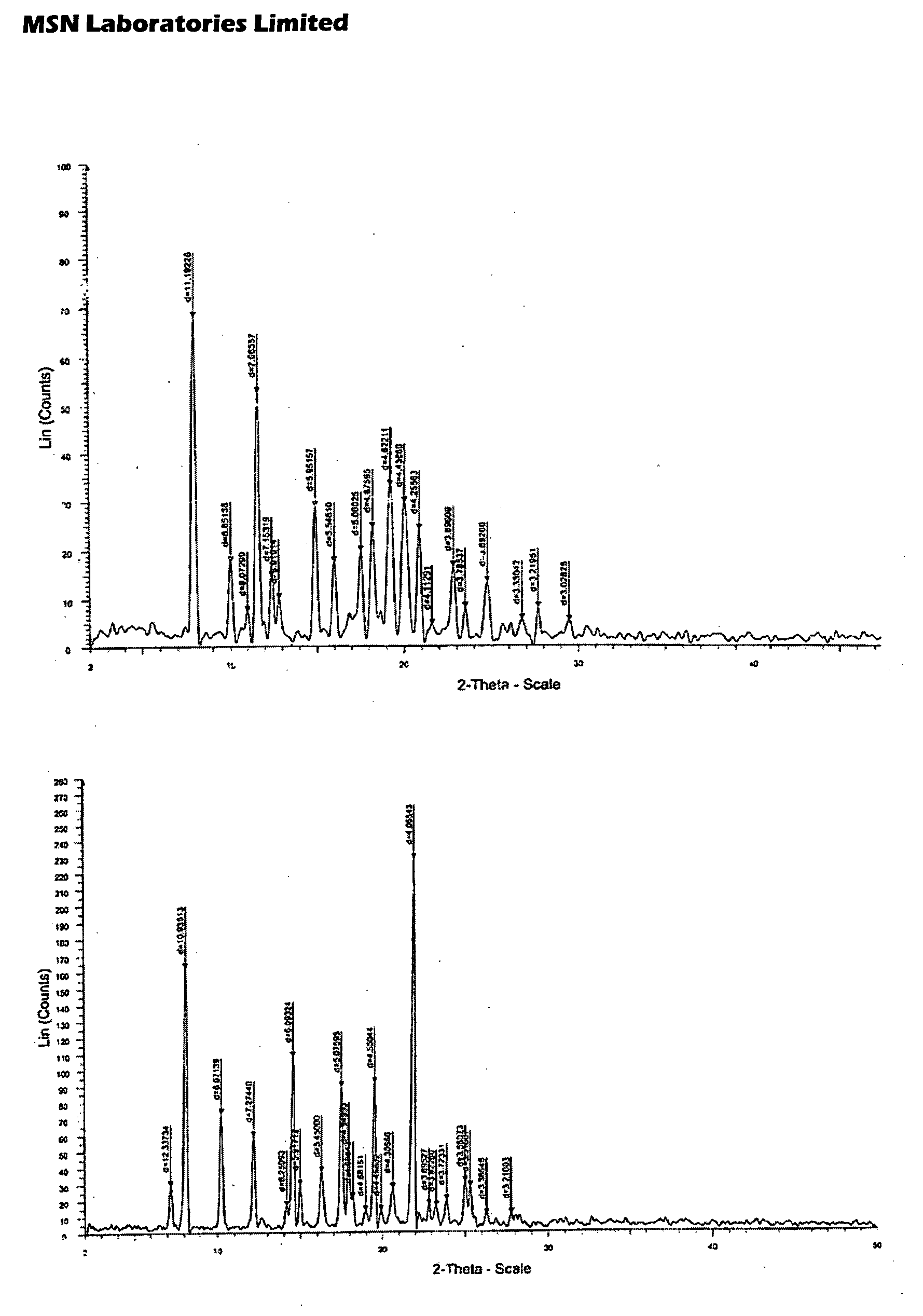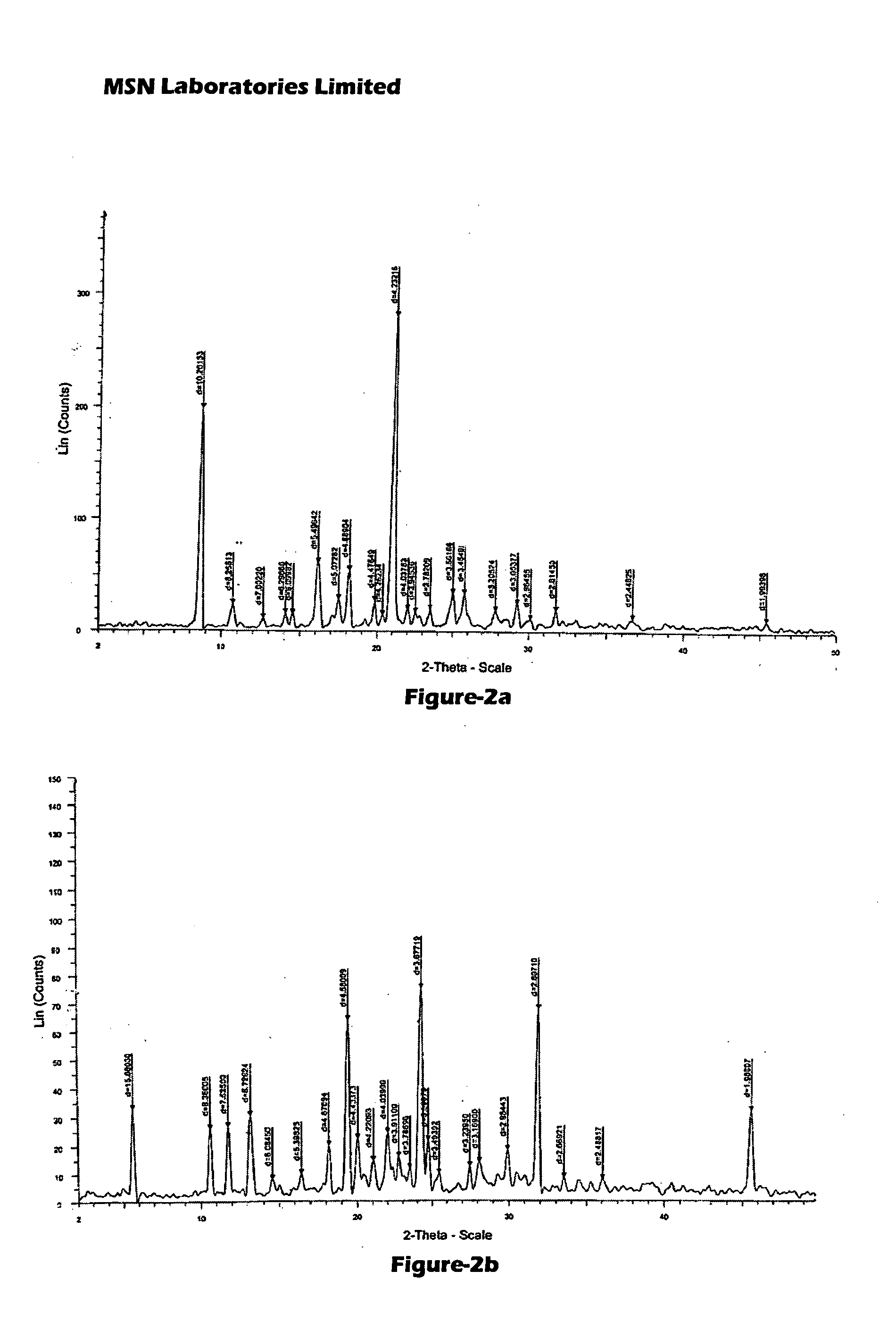Process for Preparing Pitavastatin, Intermediates and Pharmaceuctically Acceptable Salts Thereof
a technology of which is applied in the field of preparation of pitavastatin, intermediates and pharmaceuctically acceptable salts thereof, and can solve the problems of difficult commercial use, unrecommendable use of bases like n-buli, and process that is commercially unviabl
- Summary
- Abstract
- Description
- Claims
- Application Information
AI Technical Summary
Benefits of technology
Problems solved by technology
Method used
Image
Examples
example-1
Preparation of Methyl 3-cyclopropyl-3-oxopropanoate
[0098]To the solution of dimethyl carbonate (361 g) in toluene (1250 ml) added cyclopropyl methyl ketone (125 g) and stirred for 15 min at 25° C. Cooled the reaction mixture to 10° C., added potassium tert.butoxide (100 g) to it under nitrogen atmosphere. Heated the reaction mixture to 75° C. and stirred for 14 hrs. Cooled the reaction mixture to 25° C. and slowly poured it into chilled water (750 ml). Cooled the reaction mixture to 0° C. and adjusted the pH to 2.5 by using 50% HCl solution. Raised the temperature to 25° C. and stirred for 45 minutes. Separated the both organic and aqueous layers. Extracted the aqueous layer with toluene (500 ml). Washed the organic layer with water (500 ml). Distilled off the toluene completely from organic layer under reduced pressure to get the title compound.
[0099]Yield: 130 g; G.C. purity: 93.85%
example-2
Preparation of methyl 2-cyclopropyl-4-(4-fluorophenyl)quinoline-3-carboxylate
[0100]To the solution of 2-amino-4′-fluorobenzophenone (100 g) in methanol (500 ml) added Methyl 3-cyclopropyl-3-oxopropanoate (132 g), sulfuric acid (5 ml) and stirred for 15 minutes at 25° C. Heated the reaction mixture to 65° C. for 22 hrs. Distilled off the methanol completely under reduced pressure. Cooled the reaction mixture to 25° C., added water (500 ml) and stirred for 30 minutes. Cooled the reaction mixture to 0° C. and pH adjusted to 6.0 with sodium carbonate solution. Stirred the reaction mixture for 45 minutes at 25° C. Filtered the cake and washed with water. Spin dry the compound for 60 minutes. To this compound added methanol (150 ml) and stirred for 1 hr at 25° C. Filtered the solid and washed with methanol (50 ml). Dried the obtained solid to get the title compound.
[0101]Yield: 141.6 g; MR: 123-125° C.;
[0102]Purity by HPLC: 99.69%
example-3
Preparation of methyl 2-cyclopropyl-4-(4-fluorophenyl)quinoline-3-carboxylate
[0103]To the solution of 2-amino-4′-fluorobenzophenone (100 g) in acetic acid (500 ml) added methyl 3-cyclopropyl-3-oxopropanoate (132 g), sulfuric acid (5 ml) and stirred for 15 minutes at 25° C. Heated the reaction mixture to 100° C. for 10 hrs. Cooled the reaction mixture to 0-5° C. and pH adjusted to neutral conditions with 40% sodium hydroxide solution. Filtered the solid formed and washed with water. The wet solid was dissolved in methylene chloride and separated the water from it. Silica slurry was given to the reaction mixture and filtered it. Methylene chloride was distilled off and the compound was co-distilled with methanol. To the compound added methanol (150 ml) and stirred for 1 hr at 25° C. Filtered the solid and washed with methanol (50 ml). Dried the obtained solid to get the title compound.
[0104]Yield: 101 g.
PUM
 Login to View More
Login to View More Abstract
Description
Claims
Application Information
 Login to View More
Login to View More - R&D
- Intellectual Property
- Life Sciences
- Materials
- Tech Scout
- Unparalleled Data Quality
- Higher Quality Content
- 60% Fewer Hallucinations
Browse by: Latest US Patents, China's latest patents, Technical Efficacy Thesaurus, Application Domain, Technology Topic, Popular Technical Reports.
© 2025 PatSnap. All rights reserved.Legal|Privacy policy|Modern Slavery Act Transparency Statement|Sitemap|About US| Contact US: help@patsnap.com



